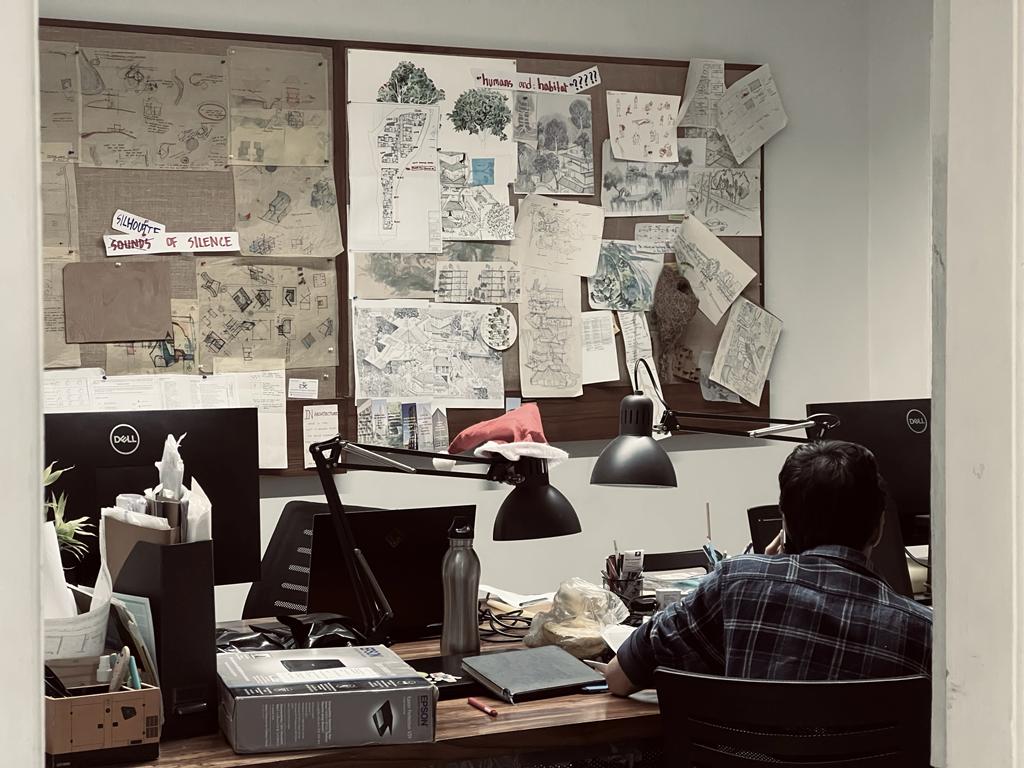After a hiatus from the Manthan Mornings series, the studio resumed its regular schedule, dedicating time to panel discussions and presentations. This initiative aims to establish a benchmark for comprehending the intricacies and processes involved in research development. Additionally, it seeks to create a platform for exploration and foster an understanding of the diverse ideas that emerge during the design thinking process.
16th Manthan – Decoding Inclusivity
Srivatsa Koduri
Abstract
Growing up queer often means grappling with the destabilizing absence of a comprehensive and accessible queer history, particularly in the realm of spatial design. This lack of representation necessitates a blurring of boundaries and an unwinding of binaries. This protean flexibility and subversive spirit, once a product of circumstance, has evolved into a badge of honor, shaping a unique way of being that holds immense potential within architecture itself. The fluidity, accessibility, and spatial freedom that emerges from this perspective challenges the notion of binarity and embraces multiplicity. Asthithvam embodies these ideas, aiming to create a space devoid of prerequisites and devoid of any disregard for the LGBTQIA+ community. The entire space invites a debate about the concept of “gendered” spaces and the possibility of moving beyond such rigid classifications.
17th Manthan – Perspectives – from another point of view
Samhita and Srivatsa
Abstract
What is your perspective? The discussion picked up from that very question. The idea behind this Manthan topic was to understand how people perceive and understand a certain excerpt from any form of literature – it can be a poem, a prose, a quotation, or a random lyric from a song. The idea was to introduce this activity as an exercise and see how people would picture them. Hence, they were given a piece of writing and were asked to depict it in the form of an image. The Manthan later turned out to be an interactive session with exchange of various ideologies and interpretations. An interesting observation was the way how architects who have been in the profession for a good amount of time interpreted an image and how interns who just started their professional training perceived thoughts.














